Morning Edition |
March 18, 2025 |
|
|
The NIT has long given teams that missed out on March Madness a chance to compete elsewhere. A new tournament—the College Basketball Crown—has shaken up that paradigm. But amid transfer issues, planning chaos, and confusion, is anyone really benefiting from this competition?
—Eric Fisher, David Rumsey, and Amanda Christovich
|
|
|
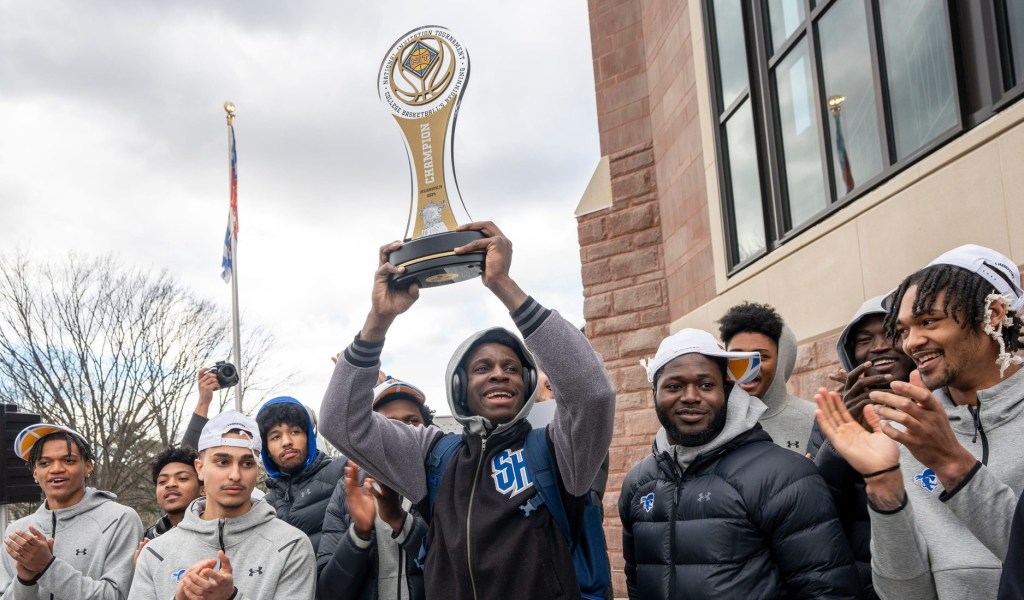
Even before the new College Basketball Crown formally starts, its standing is under heavy scrutiny, as is the National Invitation Tournament that has been radically altered by the new postseason entrant.
The Las Vegas–based, 16-team College Basketball Crown, first unveiled last spring, is a new venture led by Fox Sports and AEG that brings in teams from three power conferences the network already airs, as well as additional invited squads.
The effort adds to fast-rising fallout from a reshaped March Madness field that includes a record 14 SEC teams, more power conference dominance than ever, and a new investigation from West Virginia leaders due to the Mountaineers’ exclusion from that tournament.
The original formula for the College Basketball Crown was to have two guaranteed slots from the Big Ten, Big 12, and Big East—three conferences for which Fox already holds multiyear-rights deals—along with 10 additional schools. The situation, however, quickly grew more complicated from there. Among the resulting impacts:
- A rather different look to the NIT. A tournament that has existed since 1938 and is owned and operated by the NCAA, the NIT had more than half of its 32-team field last year filled by power conference schools. This year, just four such teams are in that event: the ACC’s Georgia Tech, SMU, and Stanford, and the Big 12’s Oklahoma State—with the Cowboys bringing in a losing record. Instead, mid-majors are dominating the NIT with the Atlantic 10 and AAC combining for 10 slots.
- At least 15 schools reportedly declined NIT bids or were contractually precluded from accepting because of the College Basketball Crown, a number similar to the record 17 to pass on the 2024 event. At least eight turned down the College Basketball Crown, with those groups containing substantial overlap. Both tournaments have far less stature or financial payoff than March Madness—even with the promise of NIL award packages for top-performing College Basketball Crown competitors.
- Despite a 12–20 record, South Carolina had an automatic bid with the NIT, the result of an NCAA change last fall to give such berths to top SEC and ACC schools not in March Madness. LSU, a 14–18 team, also had an NIT bid after the SEC placed a record 14 teams in March Madness. Both schools, however, turned down the invites.
- More complications around the transfer portal. The portal for men’s college basketball opens March 24, a week before the start of the College Basketball Crown and six days after the start of the NIT. That portal timing is a significant issue for teams that missed March Madness and are looking to retool for next season while also fielding invites to keep playing this season.
- Because of the portal, it also remains to be seen how deep participating NIT or College Basketball Crown teams are, particularly with the latter’s requirement of at least seven available scholarship players per team.
- A college basketball battle royale among major U.S. media networks, with CBS and TNT Sports combining for March Madness coverage, ESPN airing the women’s tournament and the NIT, and Fox broadcasting the College Basketball Crown.
- Widespread confusion around the final composition of the tournament fields even led to the NCAA inviting South Alabama to the NIT, then rescinding that invitation after learning UC Riverside was not going to the lesser College Basketball Invitational. South Alabama coach Richie Riley blasted the NCAA’s public apology for the mishap.
“A meaningless apology to the most meaningful group of players I’ve ever coached!” Riley said Monday in a social media post. “What they did to us is inexcusable! These guys in our locker room don’t deserve this and it’s sad your idea of making it right is a copy and paste apology.”
|
|
|
|
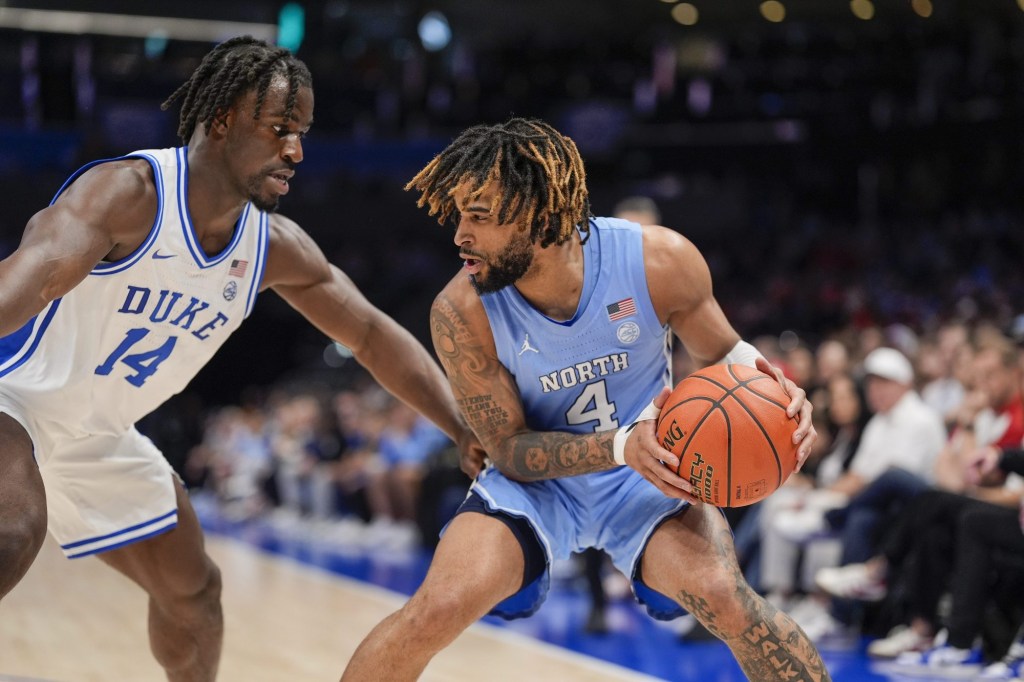
March Madness officially tips off Tuesday night with two matchups of the men’s First Four, which has become a popular tradition in its own right—both locally at annual host site Dayton and on national TV.
The big draw this year is North Carolina, which is more used to being a No. 1 seed and awaiting a No. 16 seed that comes from the play-in round, as the Tar Heels are making their debut in the First Four. UNC plays San Diego State for a No. 11 seed, with the winner set to face Ole Miss in the first round Thursday. The Tar Heels’ inclusion despite an underwhelming season has drawn considerable ire on social media, as well as from analysts like Jon Rothstein. North Carolina athletic director Bubba Cunningham is the chair of the selection committee.
Having a blueblood college hoops program should help First Four TV ratings, which averaged a combined 6.18 million viewers on truTV (1.54 million per game) last year. That was up 14% over viewership in 2023. The First Four is annually a nice boost for truTV, which has been incorporating more TNT Sports programming over the past year.
SDSU-UNC is scheduled for tip-off at 9:10 p.m. ET on Tuesday, following Alabama State–Saint Francis at 6:40 p.m. ET. On Wednesday night, American University and Mount St. Mary’s will battle for a No. 16 seed before another matchup for a No. 11 seed between Xavier and Texas, one of the record 14 SEC teams to earn a March Madness berth.
First Four Frenzy
The First Four typically has no problem filling up the roughly 13,000-seat University of Dayton Arena for two nights. Last year, more than 24,000 fans attended the four games that included at-large matchups featuring Colorado–Boise State and Colorado State–Virginia.
Dayton has hosted every First Four game outside of the COVID-19-impacted 2021 tournament dating back to 2011, and its current contract with the NCAA runs through 2028.
|
|
|
|
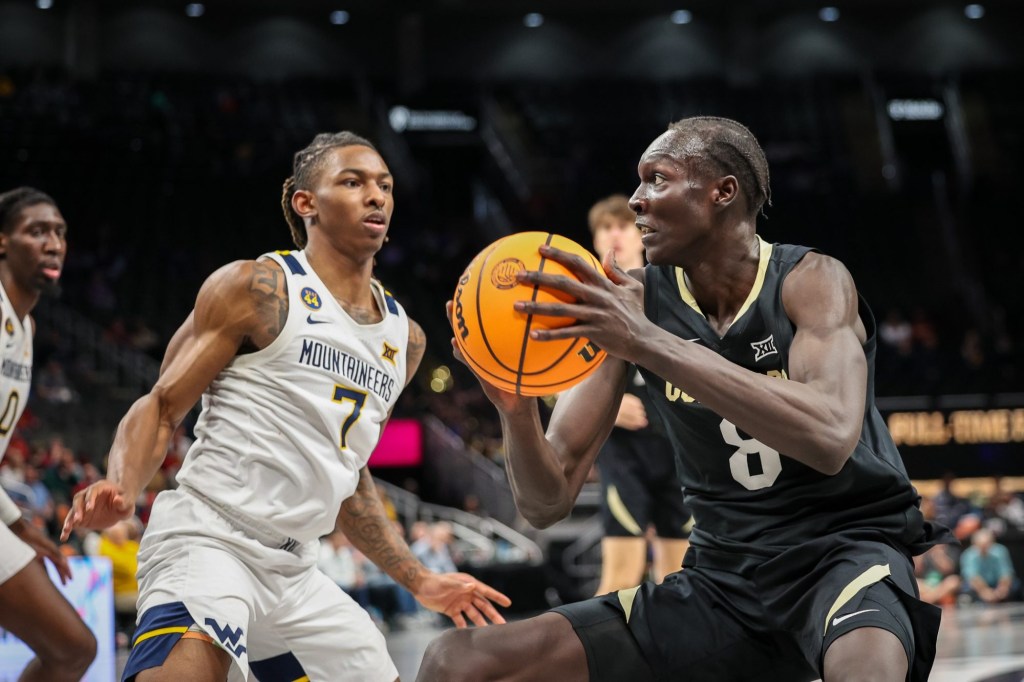
|
William Purnell-Imagn Images
|
The state of West Virginia is launching a formal investigation into the NCAA’s men’s March Madness selection committee process after the West Virginia Mountaineers were left out of the bracket, Gov. Patrick Morrisey and attorney general JB McCuskey announced Monday.
“West Virginia deserved to be in the NCAA tournament,” Morrisey said in a press conference, standing at a podium with a sign reading “National Corrupt Athletic Association.”
“This was a miscarriage of justice and robbery at the highest levels,” Morrisey said.
Morrisey began his press conference by running through the Mountaineers’ résumé (19–13 overall), delving deep into bracketology jargon. He noted the team had six quad one wins, an undefeated record against quad three and quad four opponents. He then said UNC received the final spot—and suggested the outcome was evidence that the selection committee was “corrupt,” given that UNC athletic director Bubba Cunningham was not only the chair of the committee but also received a bonus for the Tar Heels’ tournament berth. The investigation will “determine if any back room deals, corruption, bribes, or any nefarious activity occurred during the selection process,” he said.
Morrisey and McCuskey said they hoped the NCAA would cooperate to disclose the selection process before considering subpoenas or other legal action. “We want transparency,” Morrisey said. “We want objective criteria.”
In multiple media interviews Sunday night, Cunningham and committee vice-chair and Sun Belt commissioner Keith Gill were adamant that the process was fair and objective. They said if an athletic director’s team is discussed as part of committee deliberations, the athletic director is asked to leave the room and recused from the discussion altogether.
It’s the latest example of a growing trend of state and lawmakers getting involved in college sports—from NIL (name, image, and likeness) restrictions to limitations on international athletes’ athletic scholarships. (State lawmakers themselves were the ones who spearheaded efforts to get the NCAA’s original NIL prohibition lifted in the first place.)
In fact, Morrisey and McCuskey invoked some of the previous dealings with the governing body in their press conference in Charleston. They accused the NCAA of “retribution” for the state suing the NCAA in 2023 over the transfer eligibility of West Virginia basketball player RaeQuan Battle. The lawsuit, spearheaded by Morrisey when he was West Virginia’s AG, ultimately led the NCAA to change its rules, allowing for an unrestricted transfer portal where players can move schools as many times as they want.
“I’ve seen the arrogance of the institution, and that’s been disturbing to me,” Morrisey said.
The NCAA did not immediately respond to a request for comment.
|
|
|
|
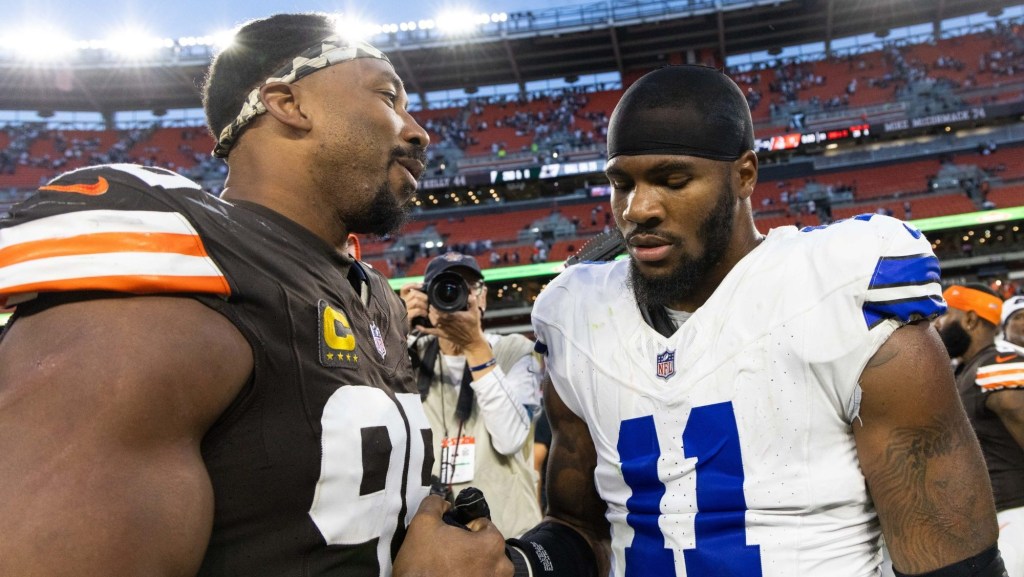
|
Scott Galvin-Imagn Images
|
Bengals star receiver Ja’Marr Chase is now the highest-paid non-quarterback in the NFL—but for how long?
News of Chase’s new deal, a four-year, $161 million extension, broke late Sunday night, just one week after the Browns had made disgruntled defensive end Myles Garrett the league’s richest non-QB. Chase’s new average annual salary comes out to $40.25 million—that’s $250,000 more per year than the $40 million salary Garrett agreed to.
Last week, Garrett took the mark from Raiders defensive end Maxx Crosby, who just four days earlier had become the NFL’s highest-paid skill position player with a new $35.5 million salary, as part of a three-year, $106.5 million extension. That makes three new highest-paid non-quarterbacks just this month.
Before that, Vikings wideout Justin Jefferson had held the mark at $35 million per season since his four-year, $140 million extension last June. Jefferson had taken the record from 49ers pass rusher Nick Bosa, on a $34 million average annual salary since his five-year, $170 million extension signed just before the 2023 NFL season began.
Who’s Got Next?
The logical choice for which player could be the next to become the NFL’s highest-paid non-quarterback is Cowboys edge rusher Micah Parsons.
Parsons is currently set to make $24 million in 2025 playing on the fifth-year option of his rookie contract. But giving Parsons a raise to $40 million–plus annually will be expensive for Dallas, which is paying quarterback Dak Prescott the NFL’s highest annual salary, $60 million, as well as a $34 million average salary for receiver CeeDee Lamb. It’s worth noting that the QB market itself has not been reset since Prescott’s deal last September. Reigning MVP Josh Allen signed an extension worth $55 million per year.
Lions defensive end Aidan Hutchinson, the No. 2 pick in the 2022 NFL Draft, is also now eligible for a contract extension, and he could challenge the high end of the non-quarterback market.
|
|
|
|
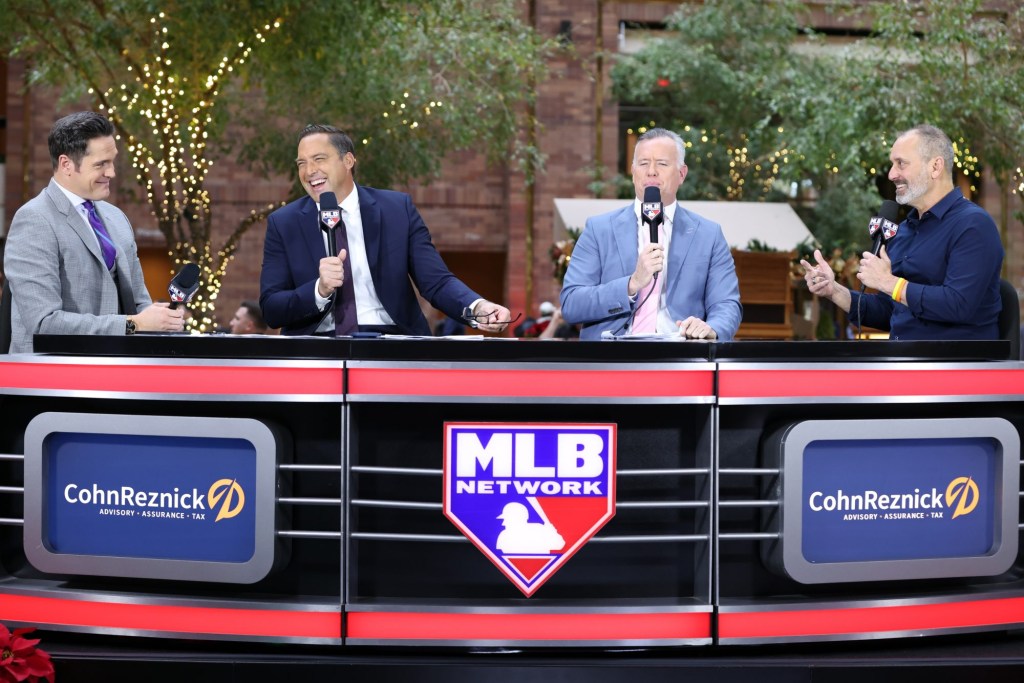 | “MLB Tonight” is expanding by an hour. |
 | Players will now be able to negotiate NIL offers before committing to schools. |
|
|
Do you plan to watch the NIT or College Basketball Crown?
|
|
Monday’s result: 51% of respondents think that power conferences are too well-represented in the men’s NCAA tournament.
|
|
|







